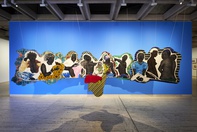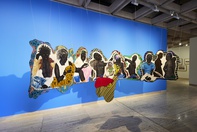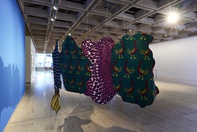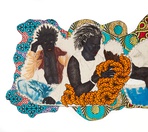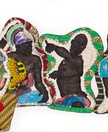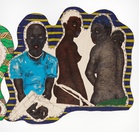Pierre Mukeba
Kaurna Country, Tarntanya/Adelaide and Gadigal Country, Sydney
2023
Displayed 2023 at Art Gallery of New South Wales
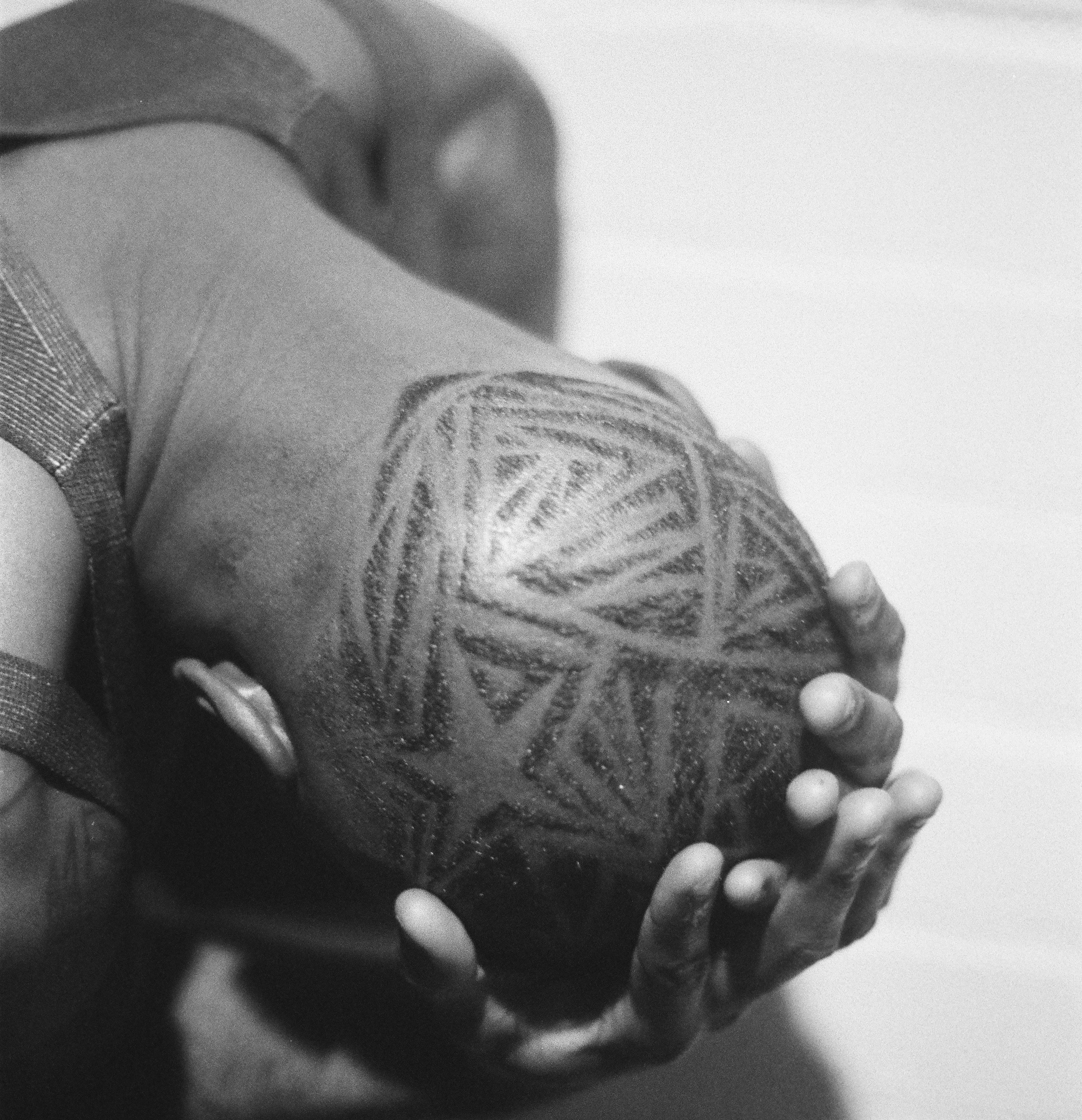
Pierre Mukeba
Born 1995, Bukavu, Democratic Republic of the Congo.
Lives and works Kaurna Country, Tarntanya/Adelaide, and Gadigal Country, Sydney.
A rigorous drawing practice is at the heart of Pierre Mukeba’s work. Using a variety of materials including brush pens, pencils, charcoal, and fabrics sourced from Africa, Mukeba weaves together intricate stories of childhood, family, war, displacement, and migration. His work acts as a medium between dream and reality, myth and narrative.
Photograph: Bridget Marie McPeake
Artist text
by Anne Ryan
Pierre Mukeba navigates a syncretic space between continents, cultures, and time. Born in Bukavu, a port city in the Democratic Republic of the Congo, he was a child when his family fled civil war via refugee camps in Zambia and Zimbabwe, before being granted asylum in Australia. He settled in Adelaide in 2006, the only male in a family of women headed by his mother, a Christian pastor. His father remained behind; their relationship, and Pierre’s most direct link back to Africa, is maintained via messaging apps.
The trajectory of Mukeba’s art mirrors the trajectory of his life, from the convulsions of post-independence Africa to Adelaide’s suburbs, to more recent travel to witness the great museums of Europe. His diasporic experience has been the crucible in which his art has formed. Self-taught, his interests reflect the bowerbird enthusiasms of the autodidact.
Mukeba’s work is enmeshed in his search for identity as a young African-Australian man, including his memories as a refugee and the cross-cultural experience of living in Australia. From this personal foundation, he extrapolates into broader themes of violence, politics, gender, and Black identity. External experiences of displacement and integration into a country of asylum are mirrored in the intergenerational dichotomies within his family and the belief structures which shape their lives. His mother’s strong Christian faith is shared by her son, but for him it is inflected with the Congolese spirituality central to his father’s traditions, and his life in contemporary Australia. His learning about his art practice and place in the world is ongoing and evolving. He adopts those things that resonate the most, whether they be popular or canonical, contemporary or traditional, nkisi or bible.
His earliest memory of art was watching a talented uncle carve masks back in Congo, but it was a high school love of manga that sparked Mukeba’s trajectory as an artist. Since then, he has focused on threads within the European canon, from Picasso to the Renaissance – an evolving engagement that has value as much for its formal artistic lessons as for its history and subject matter. These interests are reflected in Mukeba’s proclivity for realist drawing, which is absolutely foundational to his image-making.
Mukeba’s drawings are made with commercial ink pens on unstretched calico, embellished with paint and appliquéd kitenge cloth. Kitenge, a vibrant and boldly patterned textile used to make the kikwembe women’s fashions worn in Congo, is also known as ‘Wax Hollandais.’ The fabric has a convoluted trade history running from the Dutch East Indies via Northern Europe, African port towns and, latterly, Chinese textile mills. Mukeba uses it as much for its personal resonances as for its tactile qualities and unmistakable visual impact, but one of its principal effects is to impart an African inflection. Kitenge inhabits a dichotomous place in contemporary Africa and the African diaspora; an easy marker of ‘Pan-Africanness,’ its colonial implications engender debate. The combination of Mukeba’s drawing practice and use of kitenge speak to colonial antecedents, but also to the influence of European visual culture.
Mukeba’s work for The National 4 is based on the biblical story of Jesus’ Last Supper, specifically the celebrated painting on the subject by Leonardo da Vinci (in Santa Maria delle Grazie, Milan). This artwork has entered the popular imagination as a signifier not only of its subject, but of the Italian Renaissance itself, occupying a privileged position within hierarchies of art, culture, race, and religion. Mukeba’s question as to why there are no African figures in the paintings is as pertinent yet redundant as that which questions why Leonardo has painted the Judeans as Italian. A product of its time and place, it is a remarkable essay on human emotion and universal themes of trust and betrayal, damnation and redemption. Undoubtedly, also, it is the placing of those for whom it was painted in the centre of the story that gives it its power. Mukeba’s faith comes from a shared source, but manifests in his work as subjective; hand drawn and sewn, using humble, domestic materials, the artist’s labour is manifest. It is an expression of identity in faith and culture that is entirely his own, repositioned at the centre, reclaiming its power.
Pierre Mukeba
4min
Artist's acknowledgments
The artist acknowledges:
(God/Jesus)
(Christine Kitenge) mother/creative director (of all works)
(Emmanuel Lwanga Kei) writer
(Mrs. Blandine B. Mitwens) tailor
(Beatrice Gralton, Anne Ryan, and the team at the Art Gallery of NSW)
